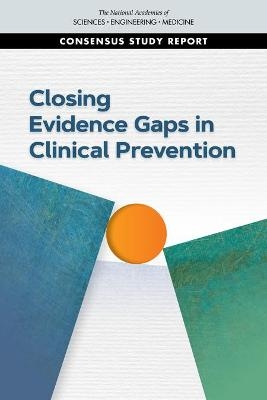
Closing Evidence Gaps in Clinical Prevention
Seiten
2022
National Academies Press (Verlag)
978-0-309-26957-5 (ISBN)
National Academies Press (Verlag)
978-0-309-26957-5 (ISBN)
Closing Evidence Gaps in Clinical Prevention, a new consensus study report from the National Academies of Sciences, Engineering, and Medicine's Board on Population Health and Public Health Practice, evaluates evidence gaps in clinical prevention recommendations described by the United States Preventive Services Task Force and other clinical practice guideline developers and presents a taxonomy of these evidence gaps for future use. This report aims to improve the coordination of efforts to describe and communicate priority evidence gaps among funders and researchers. It also proposes new opportunities for collaboration among researchers, funders, and guideline developers to accelerate research that could close evidence gaps.
The authoring committee has also developed an interactive graphic that can be used as a workflow diagram for implementing the taxonomy. This workflow walks users through reviewing evidence, characterizing evidence gaps using relevant taxonomies, and developing a research agenda. Click here to view and engage with the interactive graphic.
Table of Contents
Front Matter
Summary
1 Introduction
2 Clinical Practice Guidelines and the U.S. Preventive Services Task Force
3 Clinical Prevention Research Enterprise
4 Taxonomy and Workflow
5 Recommendations
Appendix A: Topics with "I Statements" from the U.S. Preventive Services Task Force
Appendix B: Research Methods
Appendix C: Public Meeting Agendas
Appendix D: Committee Member and Staff Biographies
Appendix E: U.S. Preventive Services Task Force's Reports to Congress
Appendix F: U.S. Preventive Service Task Force Research Needs Statements from I Statements Issued Between 2017 and 2021
The authoring committee has also developed an interactive graphic that can be used as a workflow diagram for implementing the taxonomy. This workflow walks users through reviewing evidence, characterizing evidence gaps using relevant taxonomies, and developing a research agenda. Click here to view and engage with the interactive graphic.
Table of Contents
Front Matter
Summary
1 Introduction
2 Clinical Practice Guidelines and the U.S. Preventive Services Task Force
3 Clinical Prevention Research Enterprise
4 Taxonomy and Workflow
5 Recommendations
Appendix A: Topics with "I Statements" from the U.S. Preventive Services Task Force
Appendix B: Research Methods
Appendix C: Public Meeting Agendas
Appendix D: Committee Member and Staff Biographies
Appendix E: U.S. Preventive Services Task Force's Reports to Congress
Appendix F: U.S. Preventive Service Task Force Research Needs Statements from I Statements Issued Between 2017 and 2021
| Erscheinungsdatum | 17.03.2022 |
|---|---|
| Verlagsort | Washington |
| Sprache | englisch |
| Maße | 152 x 229 mm |
| Themenwelt | Studium ► Querschnittsbereiche ► Prävention / Gesundheitsförderung |
| ISBN-10 | 0-309-26957-1 / 0309269571 |
| ISBN-13 | 978-0-309-26957-5 / 9780309269575 |
| Zustand | Neuware |
| Informationen gemäß Produktsicherheitsverordnung (GPSR) | |
| Haben Sie eine Frage zum Produkt? |
Mehr entdecken
aus dem Bereich
aus dem Bereich
das Manual zur psychologischen Gesundheitsförderung
Buch | Hardcover (2023)
Springer Berlin (Verlag)
39,99 €
Wissenschaftlich basierte Empfehlungen, Tipps und Ernährungspläne für …
Buch (2022)
Thieme (Verlag)
51,00 €


